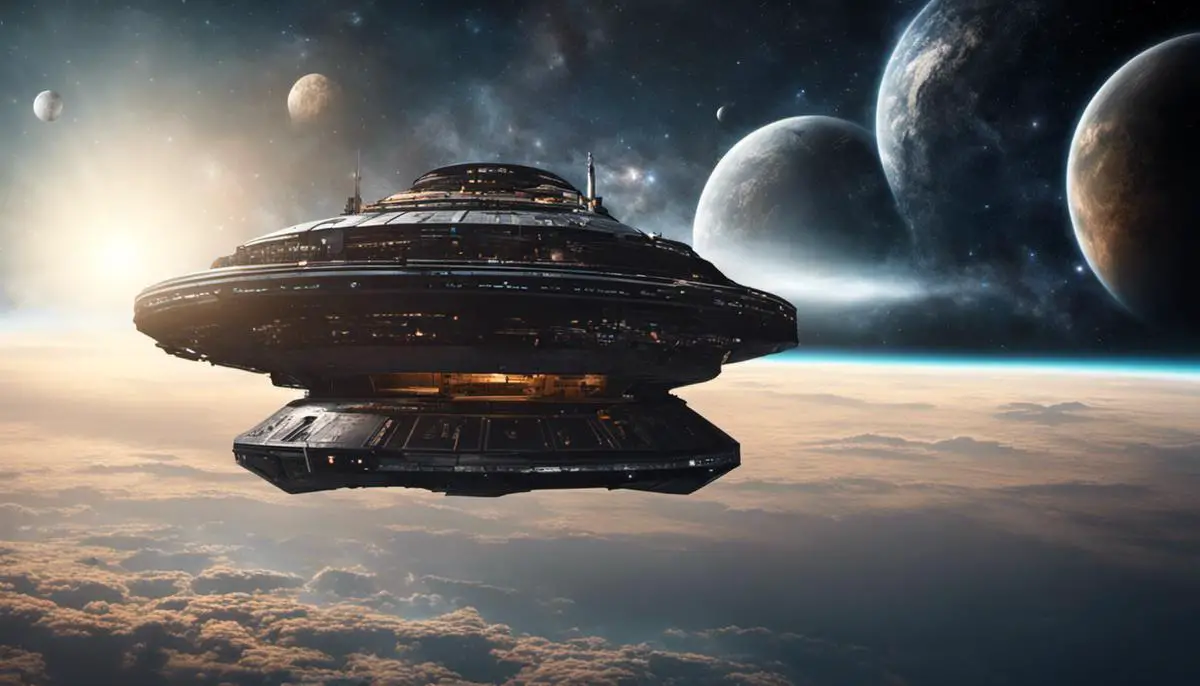As humanity’s curiosity about the universe continues to grow, so does our desire to reach further into the depths of space. This desire is epitomized by our interest in Mars, our planetary neighbor and the most viable candidate for future human colonization. The journey to Mars, however, is not as straightforward as it seems. Factors such as varying distances between Earth and Mars, technological limitations, and human wellbeing considerations all play significant roles in dictating how long such a journey would take. From understanding the technology and mechanics of space travel, evaluating our current capabilities, exploring future innovations, to considering the implications of long duration space travel on humans, the prospect of a journey to Mars presents a fascinating and complex challenge.
Understanding Space Travel
Understanding Space Travel: The Basics
Space travel, particularly interplanetary travel, is a complex and time-consuming process. Unlike driving a car on a highway where the distance between two points is fixed, the distance between Earth and Mars is not constant; it changes as both planets orbit around the Sun. On average, Mars is about 140 million miles away from Earth. However, this distance can be as short as 34 million miles when the two planets align favourably, an event known as “opposition” that occurs about every two years.
Space Technology: The Tools of the Trade
To reach Mars, spacecraft employ advanced technology and harness the laws of physics for their journey. One such technique is the Hohmann Transfer Orbit, a path that when timed correctly, allows spacecraft to travel the least distance to Mars using the least amount of fuel possible. The spacecraft we send to Mars must be capable of immense speeds to successfully make the journey. Speeds usually range between 50,000 to 100,000 kilometers per hour. These speeds are achieved through propulsion systems like rocket thrusters, which provide the force necessary to push the craft through space.
Driving to Mars: The Estimations
How long it would take to get to Mars depends on a number of variables, such as the specific timing of the launch, the speed of the spacecraft, and the relative positioning of Earth and Mars within their orbits at the time of the journey. Using current technology, it takes roughly six to nine months to travel to Mars. NASA’s Mars Science Laboratory, which carried the Curiosity Rover, took about 8.5 months to make the journey. Other missions, like the Mars Reconnaissance Orbiter, took closer to nine months. SpaceX’s Starship, currently under development, aims to make the trip in as little as six months.
Why the Fluctuating Distance Matters
The variable distance between Earth and Mars matters significantly because it affects the amount of fuel and the time it takes to travel. Launching when Earth and Mars are at opposition, or their closest approach, allows a spacecraft to capitalize on the least amount of distance needed to travel. Usually, mission planners design spacecraft trajectories that launch a few months before an opposition event, ensuring the spacecraft arrives at Mars during opposition.
Future of Mars Exploration
Mars remains a key focus in space exploration, and as scientists and engineers innovate and technology advances, it’s likely that Mars mission durations could potentially decrease. NASA’s future Artemis and SpaceX’s Starship missions aim to not only travel to Mars more quickly but to also establish a human presence there. Mars’s close proximity and its similarities to Earth make it a prime target for further study and potential colonization.
Concludingly, the journey to Mars, using our current technological capabilities, is a rather extensive process, requiring approximately six to nine months of travel. This duration, however, is subject to many scientific and technological aspects that contribute to these calculations. As we continue to advance in these fields, we predict that the journey to Mars may become increasingly efficient.
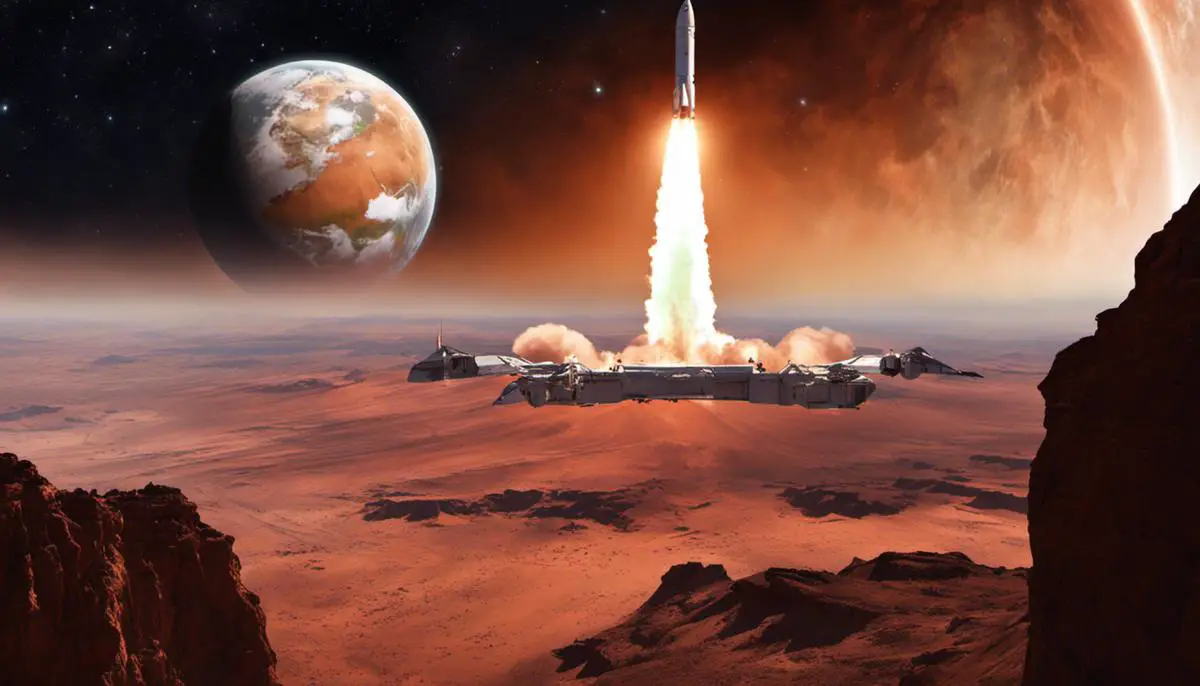
Current Methods of Space Travel
Methods Utilized in Modern Martian Travel
How long the trip to Mars takes is primarily dependent on the means of space travel. NASA currently leads in this domain, boasting eight successful Mars landers to their name. Their standard journey to Mars is characterized by a six-month expedition by leveraging the close alignment of Earth and Mars that occurs once approximately every two years. Utilizing this alignment allows their crafts to journey along a path known as the Hohmann transfer orbit, thus saving valuable fuel.
SpaceX is another formidable presence in this Martian venture. Elon Musk, the visionary CEO, has unveiled ambitions about the Mars Colonial Transporter project, also referred to as the Starship. He is optimistic that future technological advancements could reduce the travel duration to Mars down to four months. Musk has even predicted a 30-day journey to Mars, but this forecast is riddled with considerable technical and financial challenges yet to be surmounted.
The Process of reaching Mars
The journey to Mars consists of three main stages. The initial phase involves the spacecraft’s launch into space, which typically uses a large amount of fuel to overcome Earth’s gravitational pull. This journey from Earth to Mars will then be followed by a cruise stage where the spacecraft coasts through space, making minor adjustments along the way to ensure that it stays on the correct trajectory.
The final phase of a Mars mission is entering the Martian atmosphere and landing on the planet’s surface. This is arguably the trickiest part of the mission because Mars’s thin atmosphere makes it challenging to slow down a fast-moving spacecraft. Many missions have failed during this phase, often due to complications related to avoiding overheating or achieving a safe landing speed.
Notably, the new Perseverance rover that landed in February 2021 used an innovative sky-crane method rather than traditional airbags for landing. It involved the rover being lowered to the surface on a tether from a hovering platform, a method that enabled it to land with precision in a small targeted area.
Understanding the Duration of a Journey to Mars: Present Technology
The current level of technology utilized by NASA allows for a six to nine-month journey to Mars. This duration is achieved by harnessing the shortest possible distance between Earth and Mars, which only becomes feasible for a limited duration once every 26 months. This, thereby, makes the timing of the journey highly critical to effectively benefit from this brief window of opportunity.
The narrow time frame is well-understood by mission planners who leverage it to strategically time their spacecraft’s launch. This maximizes fuel efficiency and minimizes travel time. A case in point is the Mars Insight mission by NASA, which launched in May 2018 and landed on the Martian surface precisely six months later, in late November.
Summing up, the existing methods and technology would see a round trip to Mars lasting about 18 months using a Hohmann transfer orbit. This includes a waiting period on Mars for the optimum alignment of Earth and Mars for the return journey. However, innovative ventures such as SpaceX are exploring ways to shorten this travel time even further. It’s also key to remember in space travel, timelines might seem extended, potentially spanning many years.
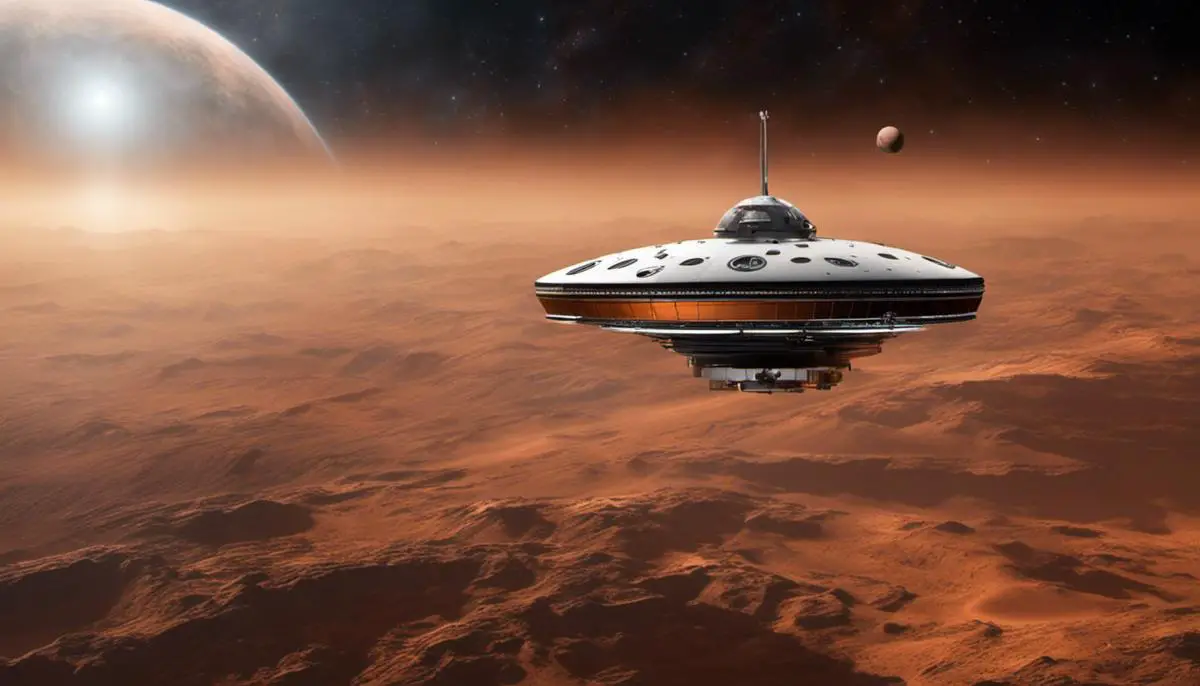
Future Methods and Innovations
Future Techniques & Innovations: A Quicker Journey to Mars
Given the growing interest in Mars as the next big frontier for human exploration, one vital question needs answering: How can future technologies make the journey to Mars faster and more efficient? With our current capabilities, we can reach Mars in approximately six to nine months. However, the future is poised with innovations that aim to enhance the efficiency and speed of these journeys which making them more viable for human travel.
One promising direction comes from NASA’s research into nuclear thermal propulsion (NTP)
NTP uses a nuclear reactor to heat a propellant, like hydrogen, to extreme temperatures before expelling the propellant out of a rocket nozzle to produce thrust. NASA’s Space Technology Mission Directorate is currently funding several NTP projects for propulsion system designs that could reduce the travel time to Mars by approximately half. This means astronauts could arrive on the Red Planet within three to four months.
Another anticipated method to speed up space travel is the concept of ion propulsion
This involves firing out streams of electrically charged atoms or molecules (ions) from a spacecraft to propel it forward. NASA’s Dawn spacecraft has already used this technology for propulsion in low-thrust, high-efficiency missions, but the technology still requires further development before it can facilitate a swift journey to Mars.
Elon Musk and SpaceX have proposed a revolutionary plan to reach Mars using a spacecraft called Starship
It’s designed to be reusable, capable of carrying up to 100 passengers and it would be refueled in orbit around Earth. SpaceX estimates that under optimal conditions, Starship could do the journey in just over a month.
Upcoming Mars Missions
NASA’s plans going forward involve constant Mars exploration with several missions in various stages of development. One notable mission is the Mars Sample Return Mission, which aims to collect samples of Martian rock, soil, and atmosphere for analysis back on Earth. This mission, which will involve cooperation between NASA and the European Space Agency, is slated for 2026. It’s hoped that these missions will provide valuable data that could inform and support future manned missions to Mars.
Feasibility and Timeframes: The Future is Closer Than We Think
Given the innovations and technological advancements currently being researched and developed, an era of faster travel to Mars seems on the horizon. However, the feasibility of these methods will depend on overcoming various challenges. These include creating sustainable life support systems for astronauts during long durations in space, protecting against the harmful effects of deep space radiation, and ensuring the safe re-entry and descent of spacecraft to the Martian surface.
Getting to Mars is not a simplistic task. It involves many factors such as enhancements in propulsion technology, improvements to spacecraft design, and strategic mission planning. The good news is that advancements have been promising. Upcoming missions are in the pipeline, experiments are continually being conducted, and technology is rapidly improving. This progress makes the idea of a manned Mars mission – potentially taking as little as one month – a tangible possibility.
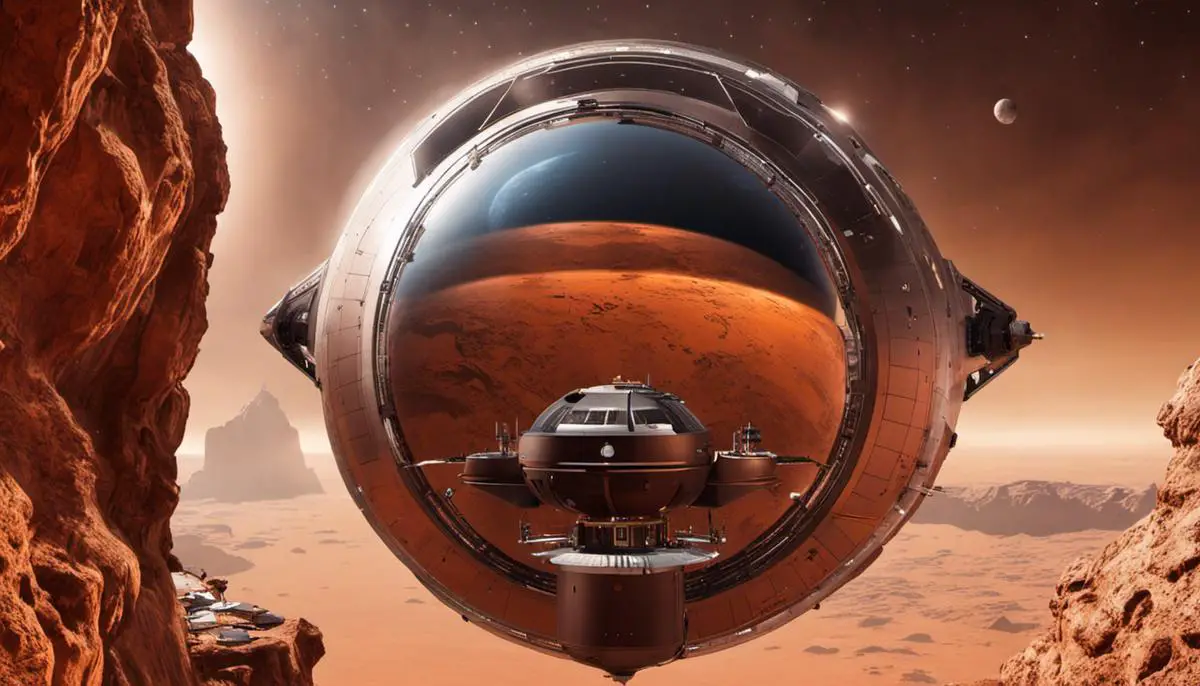
Factors Influencing the Travel Time to Mars
Earth and Mars Orbital Paths
An essential factor in determining the travel time to Mars is the planets’ orbits around the Sun. Both Earth and Mars follow elliptical, or oval-shaped, paths rather than perfect circles. It takes Earth just over a year—365 days—to orbit once around the Sun, while Mars requires almost double that time—approximately 687 Earth days. Since both planets are on separate trajectories and move at different speeds, the distance between them varies incredibly. It fluctuates from a close point of around 34 million miles to a farthest point of up to 250 million miles.
Distance Variations
These distance variations are crucial. When Mars and Earth are closest together – at “opposition” every 26 months – that’s the ideal time to launch a spacecraft. To save time and fuel, space missions aim to coincide with this period. Otherwise, the journey could be considerably longer and require more resources. However, even at opposition, the journey is not immediate. Mariner 7, a NASA spacecraft, accomplished the shortest time from Earth to Mars so far, making its journey in 128 days back in 1969.
Spacecraft Speed
The speed of the spacecraft is another important factor. The faster the spacecraft can go, the less time the journey will take. However, there are practical limits to how fast a spacecraft can travel. The speed depends on the amount of fuel it carries and how much it can burn – known as “delta-v” – to change its speed and trajectory. Generally, unmanned spacecraft traveling to Mars reach speeds of about 100,000 kilometers per hour. At this speed, the shortest possible trip to Mars would take about 39 days.
Energy Requirements
The energy required to reach Mars is considerable. First, the spacecraft must escape Earth’s gravity. Then, it needs to adjust its trajectory to align with Mars’ orbit. Finally, it needs to slow down and safely land on Mars’ surface. Each of these stages requires significant amounts of energy. Most of this energy comes from the spacecraft’s propulsion system, but some can also come from the gravity of other planets or the Sun, used in “gravity assist” maneuvers.
Unpredictable Challenges
Unpredictable factors can also affect the journey to Mars. Space weather, like solar flares or cosmic radiation, can delay or reroute missions. Mechanical issues with the spacecraft could also become crucial mid-flight. Even dust storms on Mars, which can last for weeks or months, can affect the timeline of the mission.
Concluding Thoughts
The journey to Mars is not as straightforward as it seems due to a variety of factors that come into play. The time required to reach the Red Planet is influenced by aspects such as orbits, velocity, and the amount of fuel necessary for the journey. Yet, there may be unexpected hurdles or variations in these factors which can cause travel durations to vary significantly.
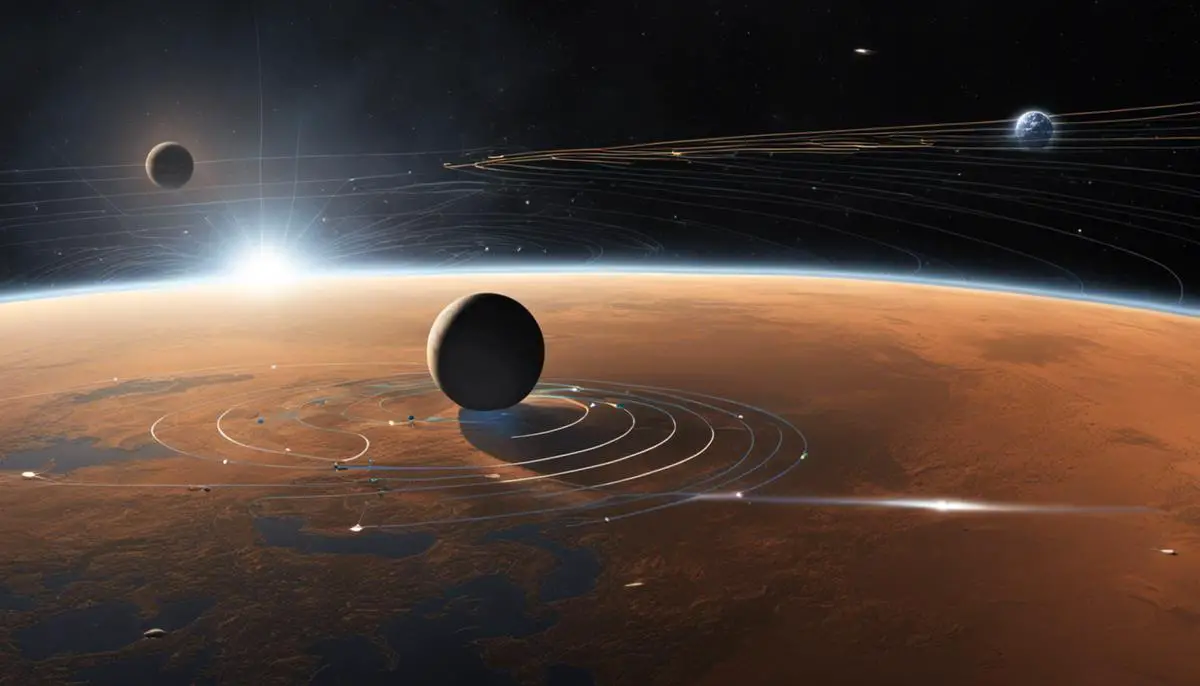
Implications of the Journey Duration for Human Mars Missions
Grasping the Distance: The Length of the Mars Voyage
The adventure to Mars, regardless of whether it’s manned or robotic, relies heavily on the probe’s speed and the erratic distance between Earth and Mars, which can fluctuate extensively due to both planets’ elliptical orbits around the Sun. At the point of their closest approach, also known as opposition, Earth and Mars are about 33.9 million miles (54.6 million kilometers) away from each other. But when they find themselves at opposite sides of the Sun, their distance can stretch to as far away as 250 million miles (401 million kilometers).
In practical terms, the optimum time to launch missions to Mars is when Earth and Mars coincide at the point of opposition when the spacecraft has reached Mars. This alignment is also referred to as the Hohmann Transfer Orbit. In these conditions, the spacecraft is required to traverse roughly 300 million miles (480 million kilometers), a journey which could take around nine months given our current propulsion capabilities.
Maintaining Life Support and Supplies for Long-duration Space Travel
Crafting a journey for humans that lasts up to nine months, or potentially longer if any unforeseen complications arise, requires complex planning—just maintaining the vital life-support systems is a major challenge. These systems would have to consistently provide air, water, food, and other basic human survival requirements, and would also need the ability to recycle as much as possible to reduce the mass of supplies launched from Earth.
Fuel is another important resource needed for the journey. The spaceship must store enough propellant for course corrections and to enter and exit Mars’s orbit—not to mention the fuel required for the return journey. Therefore, having fuel efficient systems or concepts like fuel depots in space are being studied.
The logistics of carrying or creating these resources and supplies for the duration of the mission has prompted NASA and other space agencies to research and invest in technologies for in-situ resource utilization. Essentially, this would involve using materials found on Mars to produce water, air, fuel, and possibly even food.
Mental and Physiological Implications of Long-duration Mars Missions
A mission to Mars is not only a physical challenge but also a mental one. Prolonged periods of isolation and confinement could severely affect the crew’s mental health, escalating the risk of issues such as depression and anxiety. Also, because of the time delay in communication with Earth, astronauts need to prepare to be considerably self-sufficient.
Physiologically, long-term space travel can impact the human body in numerous ways, like muscle and bone mass loss and changes to eyesight. As such, the potential impacts on health due to reduced gravity or “weightlessness” and how to counteract them from a dietary, exercise, and medical perspective form another major research area.
Space Agencies’ Preparations for Mars Missions
Considering the numerous challenges, space agencies are prepping to ensure the success of future human trips to Mars. They are launching precursor missions to test technologies, learn more about the Martian environment and its potential hazards, and advance their understanding of living and working on another planet. NASA, for instance, is embarking on long-duration missions to the International Space Station (ISS), simulating Martian environments on Earth, and launching mighty Mars rovers to gather more data on the Red Planet.
In conclusion, the journey to Mars is a crucial next step in human space exploration, necessitating long-term planning and an immense technological boost. It will undoubtedly pose formidable challenges—both scientific and logistical—but as scientists and engineers continue to innovate and explore, future astronauts will progressively come closer to setting foot on the Martian soil.
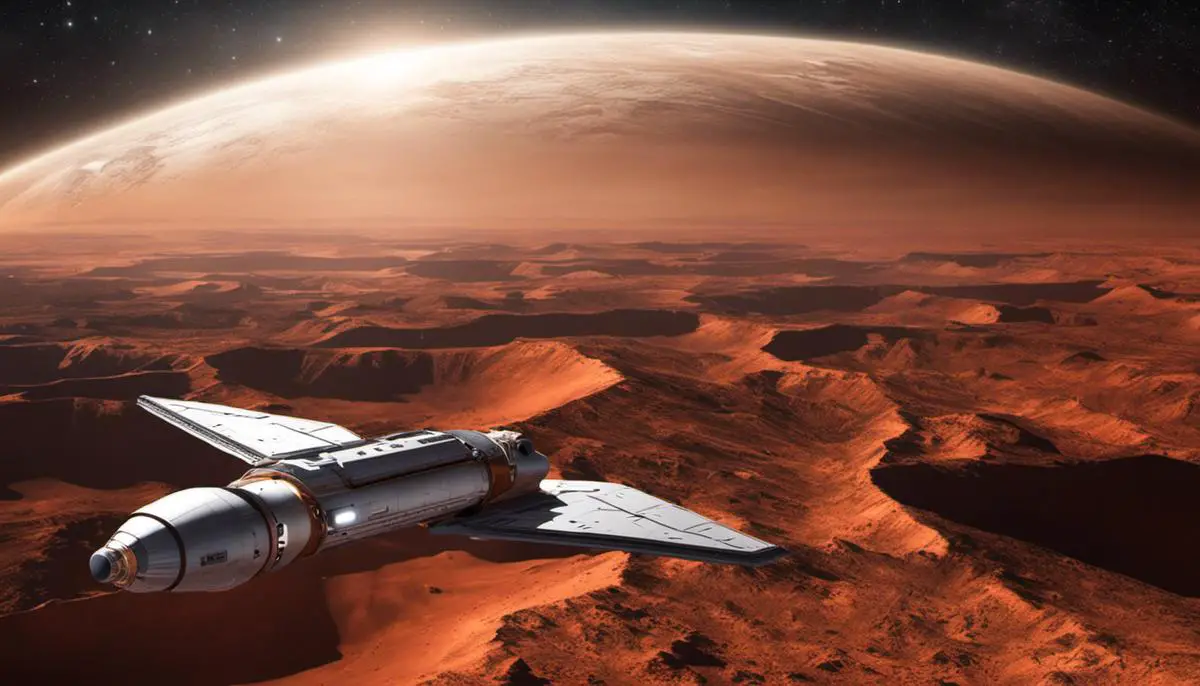
Exploring the red planet and understanding its potential for sustaining human life is a monumental objective that requires careful planning, robust technologies, and a consideration for human biology and psychology. Advancements in space travel, while impressively innovative and efficient, still evokes discussion about the time it would actually take to get us to Mars. While this journey remains a formidable challenge, it symbolizes our unyielding human spirit of exploration and discovery. As we prepare to embark on this journey, driven by our inherent curiosity and thirst for discovery, the factors that determine the timeframe for such a voyage continue to inform the future of space travel, shedding light on our ability and potential to conquer new frontiers beyond our Earthly realm.
![]()
